AI at Work
How to Use An AI Social Media Ad Generator to Optimize Ad Spend and Performance

Akshita Sharma · Content Marketing Associate
January 16th, 2025 · 13 min read

Enterprise marketers are facing a paradox, while social media and ad spending globally races toward $345 billion by 2029, the efficiency of that spend is declining or unclear. The days of reliable CPMs and predictable audience targeting are being disrupted by privacy regulations, platform changes, and an increasingly fragmented number of platforms. With reduced reliance on third-party data, the burden of performance has shifted dramatically to the volume and relevance of ad content itself.
The stakes are particularly high for enterprise marketers, where even a 1% improvement in click-through-rates can translate to millions in recovered revenue. Its why companies are already restructuring their creative workflows around AI-powered ad generation, moving beyond simple cost reduction to achieve what was previously impossible: true one-to-many advertising at enterprise scale.
In this article, we'll examine how enterprises are leveraging AI ad generators to solve the modern marketer's dilemma of maintaining brand integrity, achieving audience-relevant creative at scale, and ultimately, improving ROAS in an increasingly complex digital ecosystem.
What are AI social media ad generators?
How to use an AI social media ad generator for cost-effective ad campaigns
Real-world examples of AI-created ad content
Features to look for in AI tools
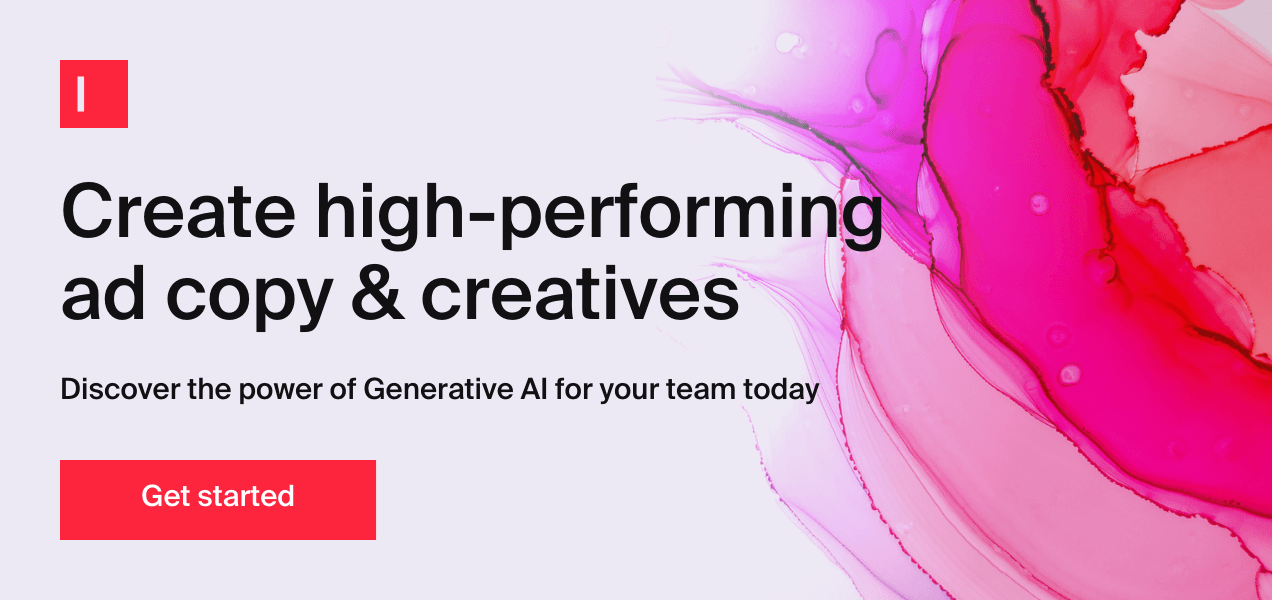
What are AI social media ad generators?
AI social media ad generators are specialized tools that create platform-optimized ad content across major advertising networks like Meta, Google, LinkedIn, and other social platforms. Using artificial intelligence, they can automatically generate ad copy, ad visuals, and more from simple AI copywriting prompts.
Advanced AI ad generators like Typeface can simultaneously consider platform-specific requirements, brand guidelines, and performance data to create highly differentiated ad creatives. For instance, they can automatically adapt messaging and visuals across ad platforms, including Google search ads, Google responsive display ads, Meta ads, and more. These systems can leverage pre-built templates and design frameworks to rapidly scale creative variations for experimentation and testing across different platforms and formats, dramatically accelerating the creative optimization process.
What separates true enterprise-grade AI ad generators from basic tools is their comprehensive capabilities: First, they offer true multimodal functionality, handling everything from text and images to video inputs and outputs seamlessly. Second, they provide scalable workflow systems and templates that enable teams to create and test creative hypotheses – from value propositions to visual styles – without manual prompt engineering for each variation. Third, these systems can learn from and train on your brand's unique content, design templates, and performance data, ensuring AI-generated content remains both distinctive and on-brand. Finally, they offer robust enterprise integrations that not only pull in relevant performance data but also enable direct publishing to ad networks, streamlining the entire ad campaign workflow.
Why should you use an AI social media ad generator?
An AI social media ad generator can help improve your advertising campaigns in several ways. From boosting productivity in ad creation to inspiring creativity, an AI social media ad generator can transform the way your marketing team works. Here are a few benefits:
Automation of ad copy creation: The AI ad copy generator streamlines the creation process, reducing time spent on drafting. With AI generating a solid first draft, your team has more time to review and refine the copy to get better results.
Audience-relevant content: The AI social media ad generator can tailor ad copy and visuals to appeal to the specific interests and behaviors of your audiences to boost engagement rates. On Typeface, you can save different audience segments with information such as demography, interests and spending behavior, or import pre-defined segments from your customer data platforms. When generating content with AI, you can apply the relevant audience segments to ensure the AI-generated content is relevant and personalized to those specific segments.
Localization and variability: With AI social media ad generator on Typeface, marketers can generate multiple versions of ad content. You have the flexibility to localize both ad copy and visuals for different markets and audience segments. With features like Creative Automation, you can also automatically adapt the same ad into different versions for different audiences, with minimal manual redesign involved.
Cost efficiency: AI-powered ad generation transforms the traditional ad creative process from weeks to hours or days, enabling teams to produce multiple high-quality ad variations in the time it traditionally took to create just a few. This dramatic increase in creative testing capacity, combined with AI's ability to rapidly iterate based on performance data, helps marketing teams optimize their ad spend more effectively by quickly identifying and scaling winning combinations of messaging, visuals, and formats.
How to use an AI social media ad generator for cost-effective ad campaigns
Creating high-impact social advertising demands excellence across every element – from compelling copy and visuals to precise brand alignment and audience resonance. While traditional approaches often force trade-offs between quality, scale, and efficiency, AI ad generators are enabling enterprise teams to achieve all three simultaneously. Here's how leading marketing teams are using these tools to transform their campaign performance while reducing production costs.
1. Using AI ad copy generator for social media ads
Writing effective ad copy is typically the most time-consuming aspect of campaign creation. Getting the message right and ensuring audience resonance requires significant effort, and even seasoned copywriters can struggle to find fresh inspiration. The traditional approach of starting from scratch for each campaign wastes valuable time that could be better spent on strategy and optimization.
Typeface offers various AI ad copy generator templates that can give you copy tailored for your chosen social media platform. For example, for Meta ad campaigns, Typeface’s ad templates streamline creation by having you input essential elements:
Campaign goal
Target audience
Format selection (single image, carousel, etc.)
Select existing creative assets and design templates if applicable
Prompt for any additional context
From these inputs, the system generates an entire ad within Meta's format requirements, with the flexibility to preview and adapt content across placements - whether it's Facebook Search, Reels, or Right Column ad.
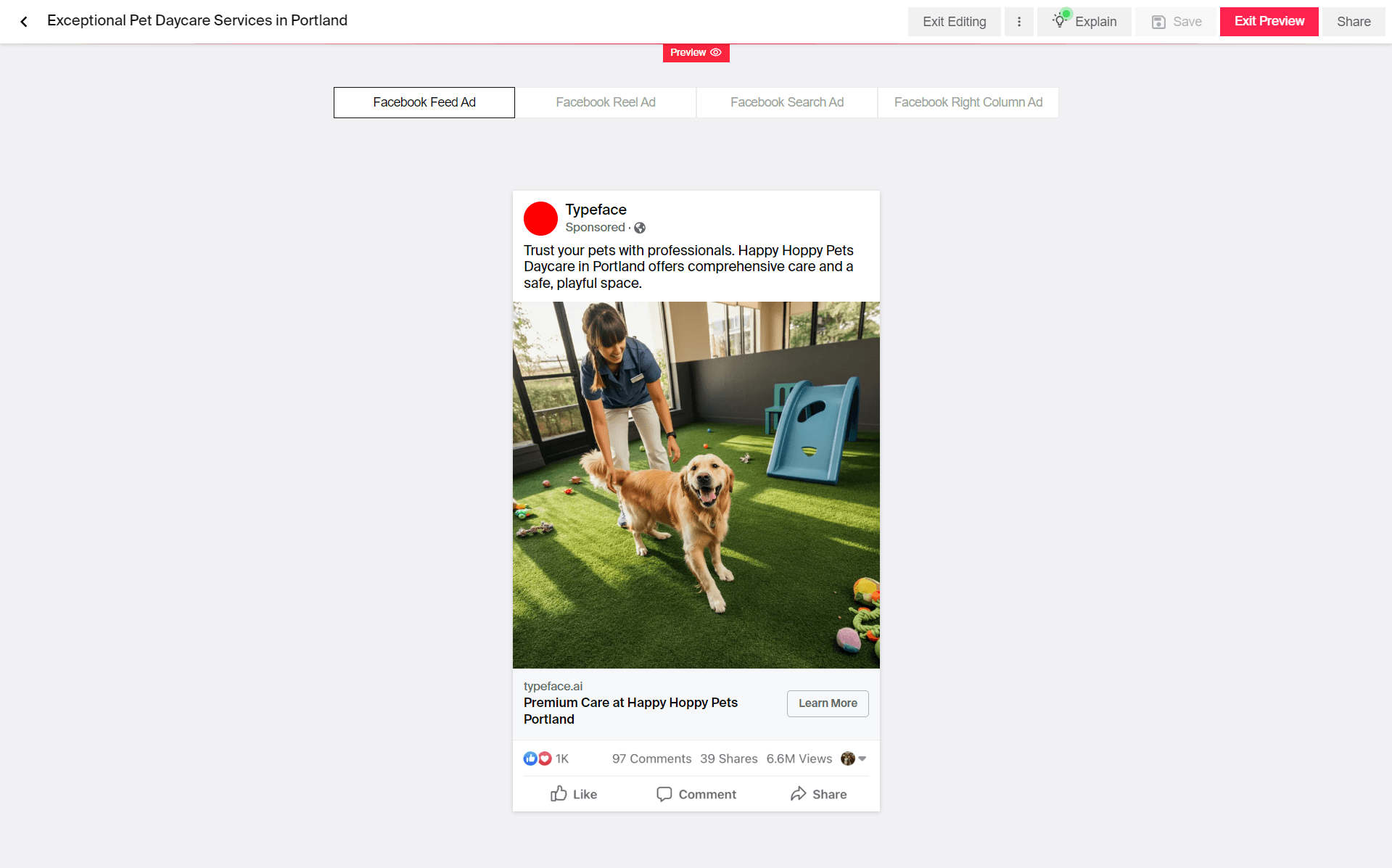
You can create similar social media ads for LinkedIn or Twitter using the LinkedIn Social Post template or the X Social Post template.
The best part about using AI to create ad copy for social media is that you can generate multiple variations of the copy quickly. This could be a source of endless inspiration or could help you test out different ad versions to see which one strikes a chord with your target audience. As a result, you can make adjustments to your social media marketing strategy and drive results much faster.
2. Using AI social media ad generator for ad creatives
Visual elements are the cornerstone of successful social media advertising. In today's rapid-scroll environment, compelling imagery isn't just important – it's essential for capturing attention. The challenge for enterprise marketers has always been maintaining visual quality at scale across numerous campaigns and platforms.
Traditionally, achieving this level of visual excellence meant significant investment: expensive photo shoots, complex production logistics, and lengthy timelines that often impact campaign agility. Even with substantial budgets, the practical constraints of traditional production – from seasonal limitations to location challenges – frequently force compromises in creative quality or campaign timing. The result? Many marketing teams resort to stock imagery that fails to differentiate their brand or connect authentically with their audience.
AI social media ad generator on Typeface can make this part of ad creation more cost-effective and faster. When it comes to ad creatives, there are multiple ways you can do it on Typeface.
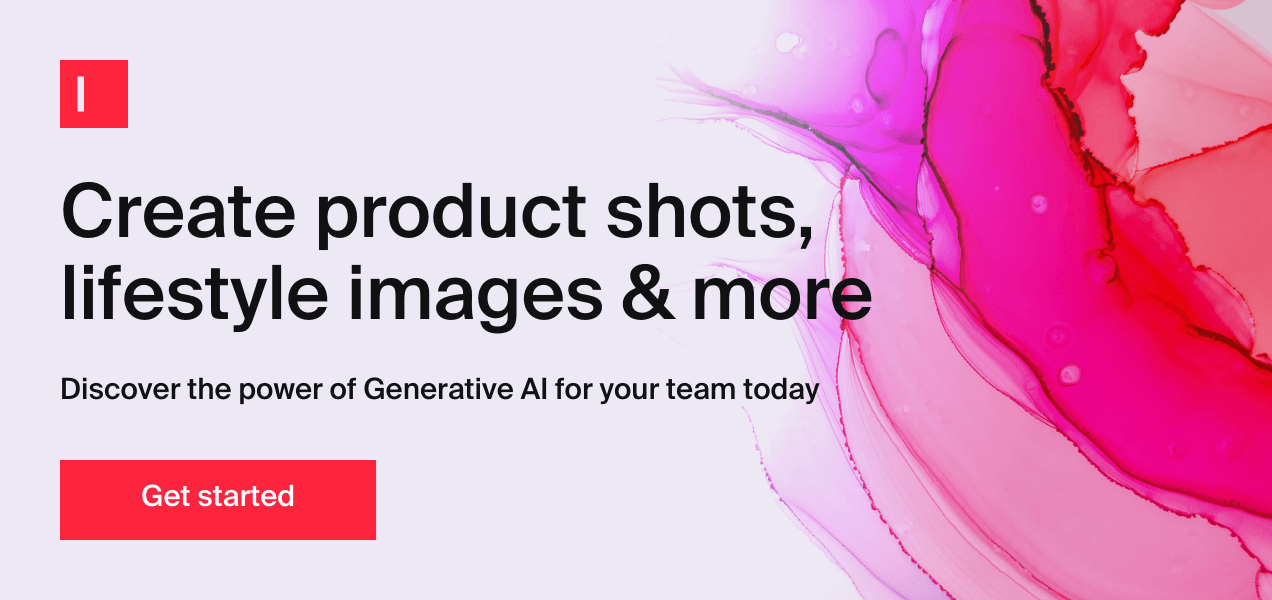
Add product assets into compelling ad creative
When creating ads for Facebook, LinkedIn, or Twitter using AI ad templates, you can leverage your existing product catalog or image library to generate professional ad creative. This approach is particularly powerful for retail, CPG, beauty, and other product-centric brands with extensive product image libraries. Rather than using static product shots, the AI template lets you select a product render or inventory image and transform it into a dynamic ad scene.
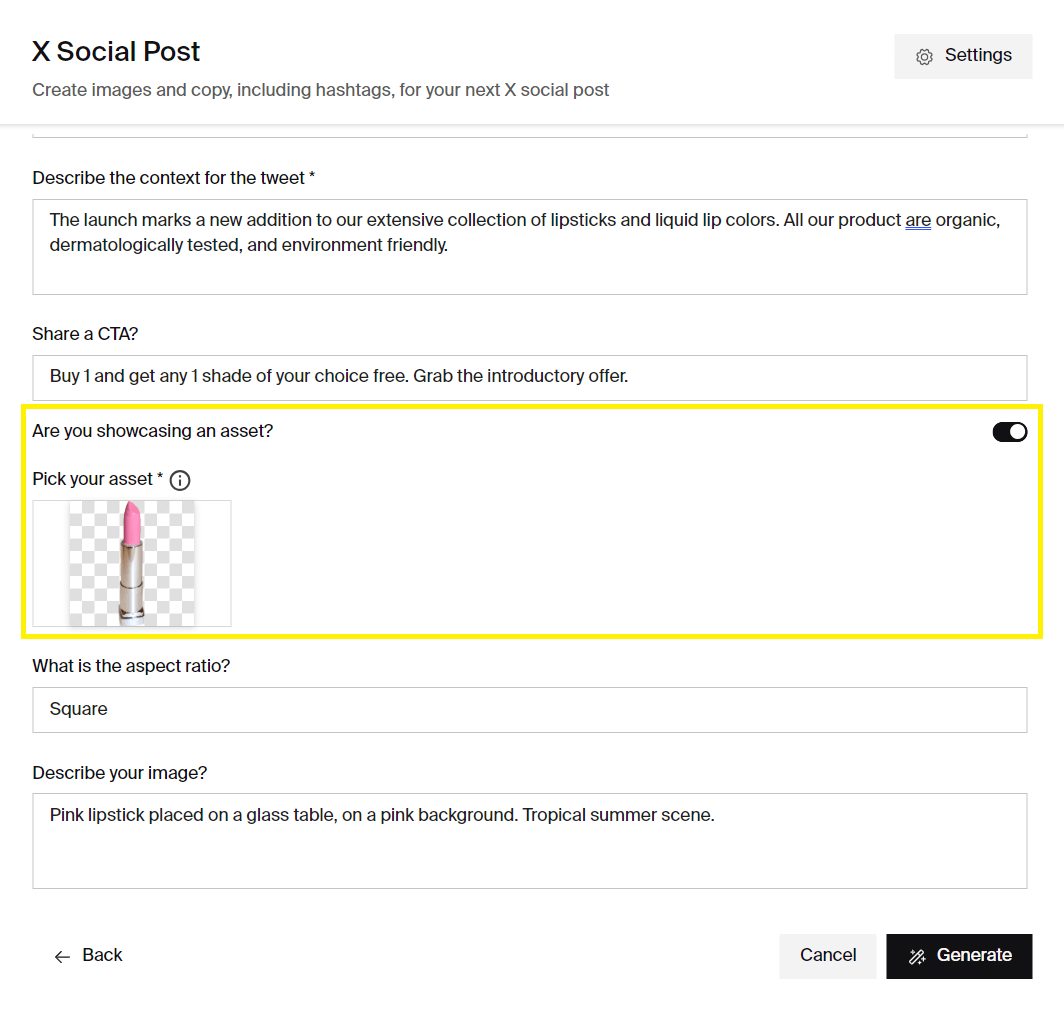
Based on your input, the Magic Prompt feature on Typeface will add the right modifiers to enhance the prompt and give you a high-quality visual with your asset.
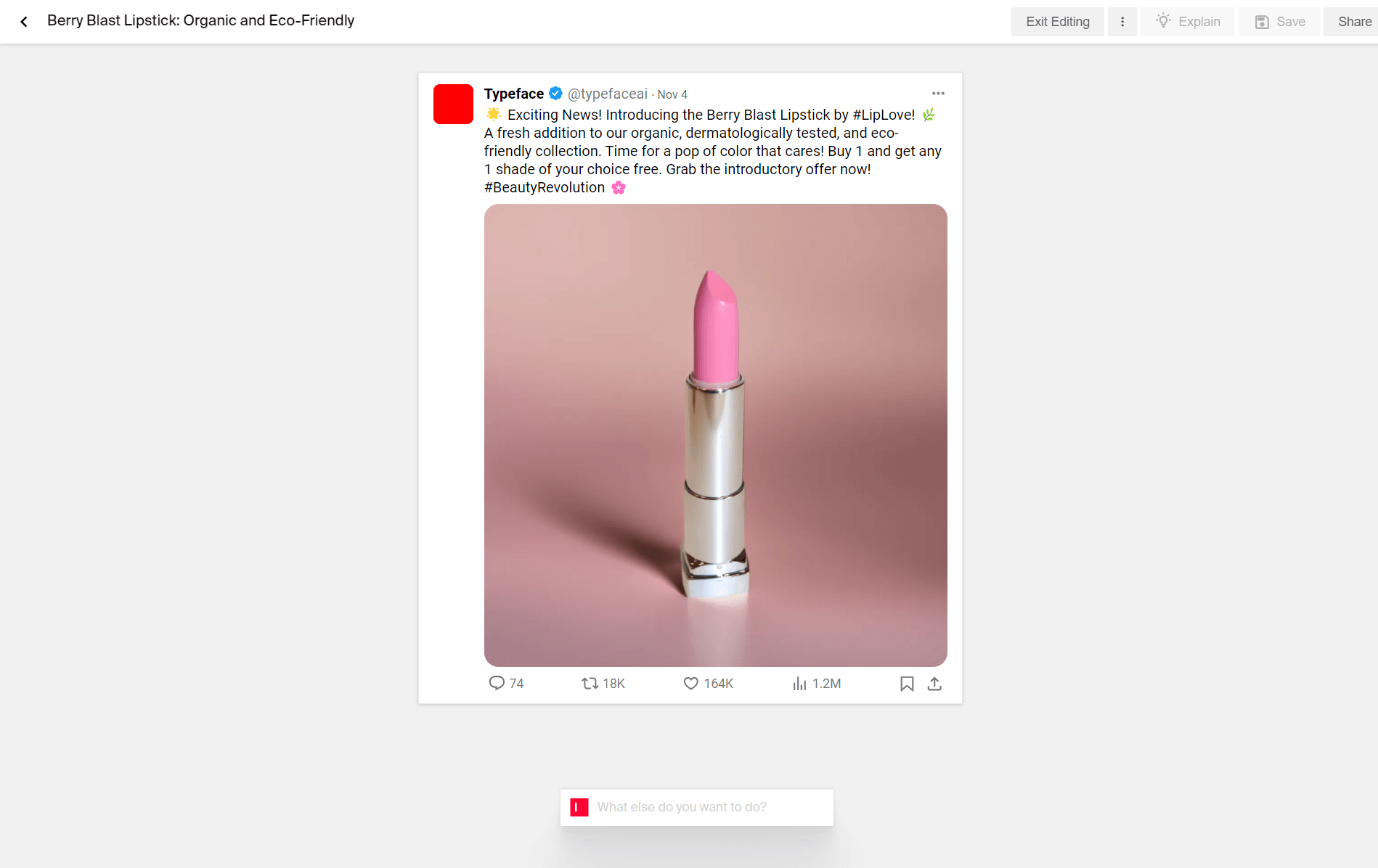
What's even better is that you get up to 4 variations for a collection Meta ad and 10 variations for a carousel Meta ad in one go. For Google ads, you can get almost 11 variations, ready to publish directly to Google Ads Manager. Need more options? Simply adjust your prompt parameters to explore different creative directions.
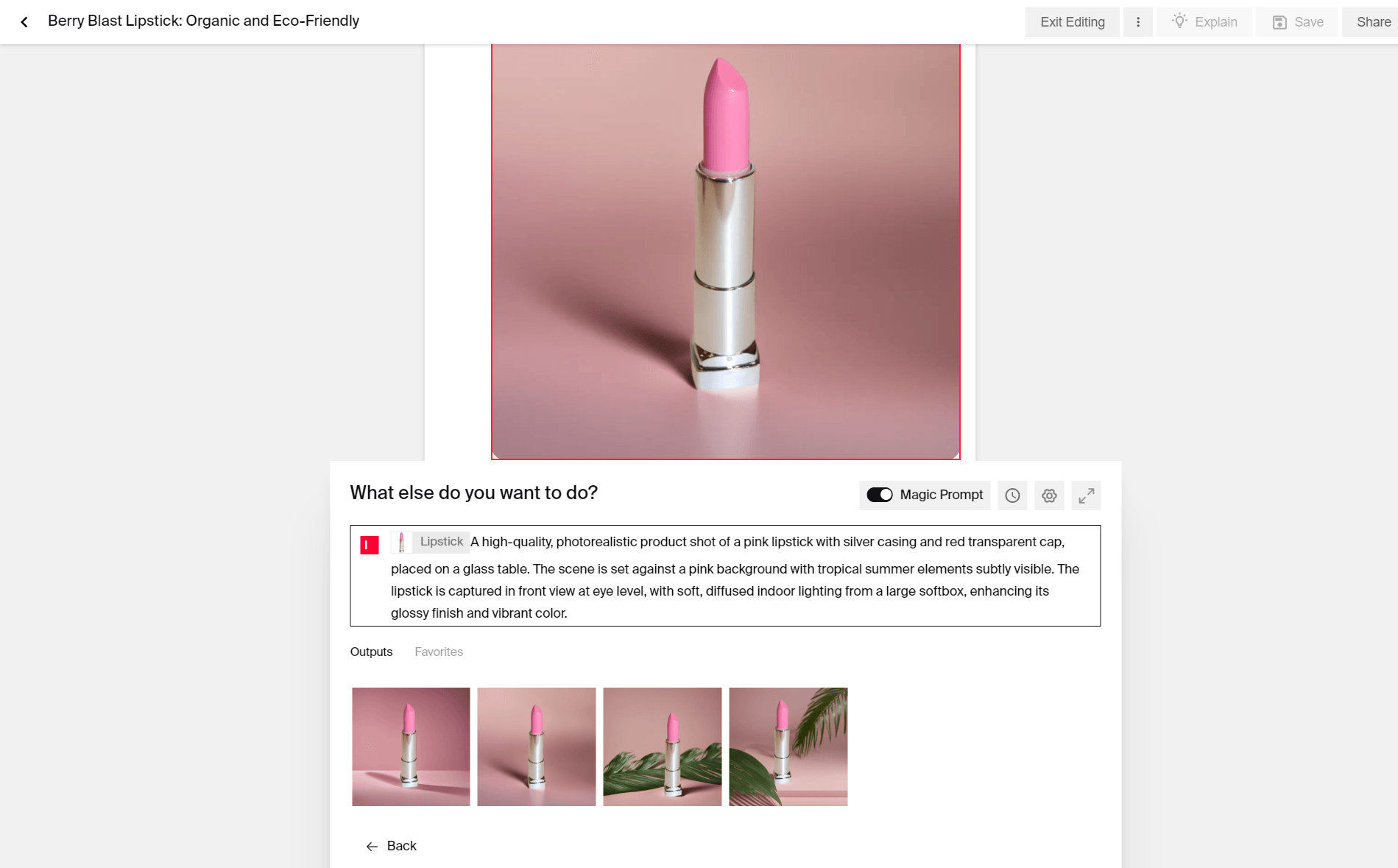
Quick tip: For maximum control over your creative output, disable the Magic Prompt feature when generating product-based visuals. This ensures your specific art direction and composition requirements remain exactly as intended, without any AI-driven prompt modifications.
Generate a custom image from a text prompt
Beyond product-based visuals, you can generate entirely custom ad creative using detailed text prompts. By crafting specific descriptions of your desired visuals, the AI transforms your creative vision into production-ready ad imagery.
Typeface’s Image Studio provides comprehensive control over every aspect of visual generation – functioning like a virtual photography studio where you can precisely direct composition, lighting, effects, and overall aesthetic.
Remember to leverage Magic Prompt's enhanced instruction capabilities to transform your basic creative direction into optimized generation parameters, ensuring maximum visual quality and brand alignment.
If you need inspiration, this blog offers 50+ AI image prompts for marketing creatives.
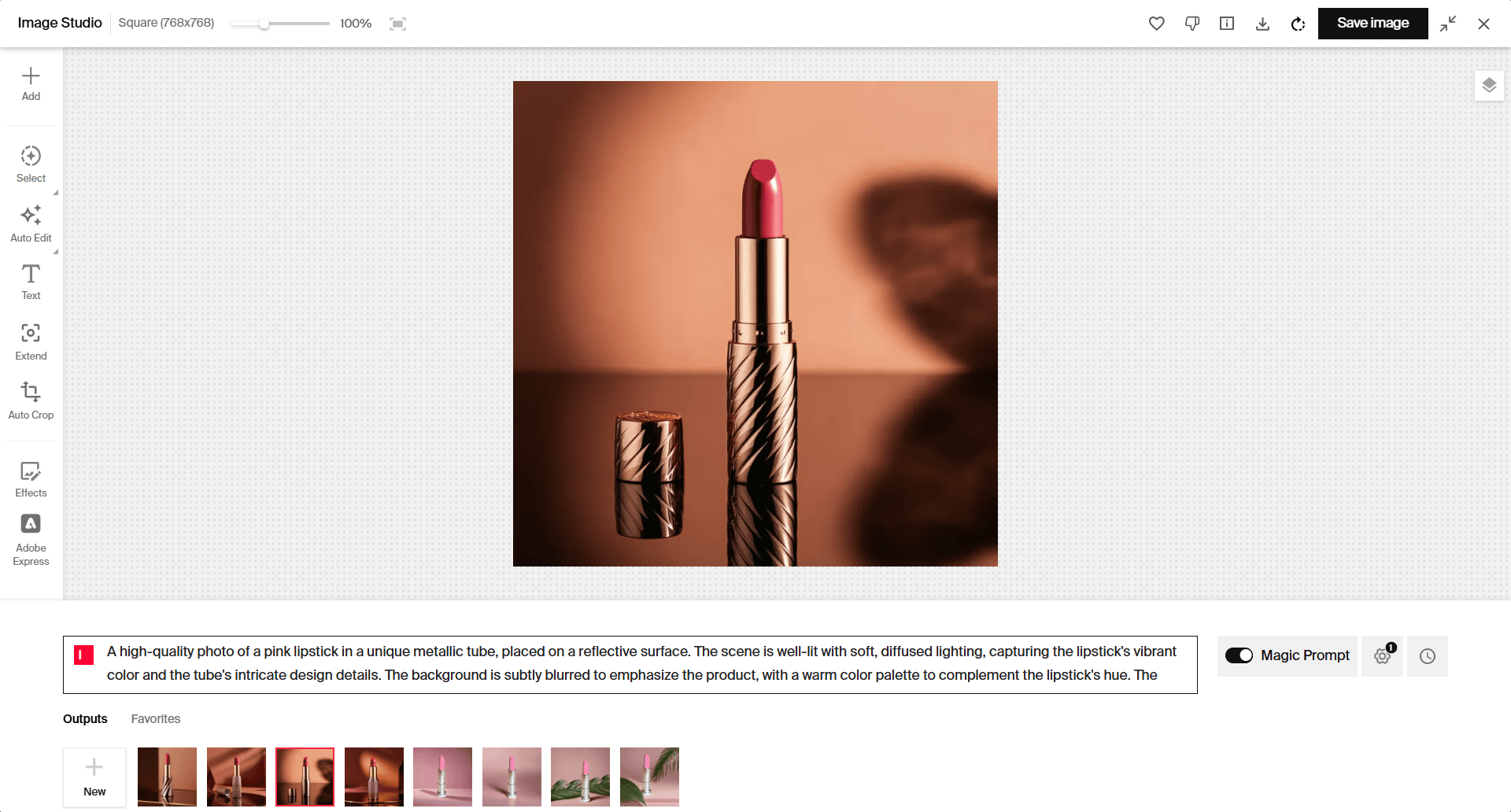
The Typeface Visual Inspiration Studio takes AI-powered creativity a step beyond text-to-image generation. It gives you the option to choose a library of reference images from different industries. You can guide the AI with visual examples that showcase the mood, style, and quality you want, rather than trying to describe them in words. The AI then combines these examples with your brand assets and specific guidelines to create images that truly represent your brand.
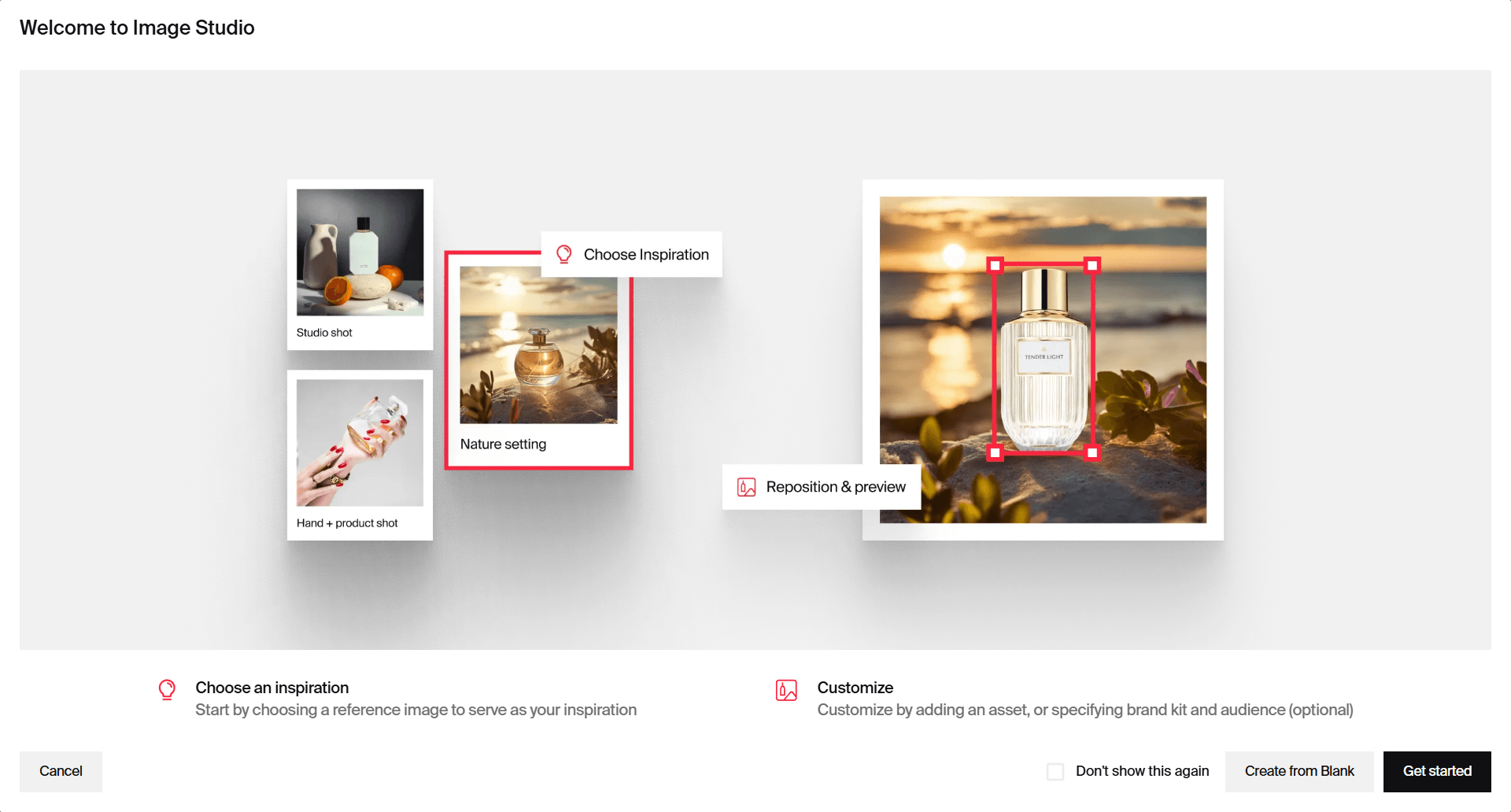
These approaches allow for more tailored and unique visual content that aligns closely with your brand message or campaign strategy.
3. Scaling ad personalization with AI
In today's performance marketing landscape, ad personalization isn't just a nice-to-have – it's critical for maximizing campaign ROI. AI-powered ad generation transforms what was once a resource-intensive process into a scalable, data-driven operation.
Typeface’s AI templates enable sophisticated audience-specific content creation through a streamlined workflow. After selecting your brand kit, you can tailor creative elements based on core demographic attributes like gender, age range, and location. The system then adapts copy and visuals to align with these audience characteristics, along with any defined interests and preferences you specify for your target segments.
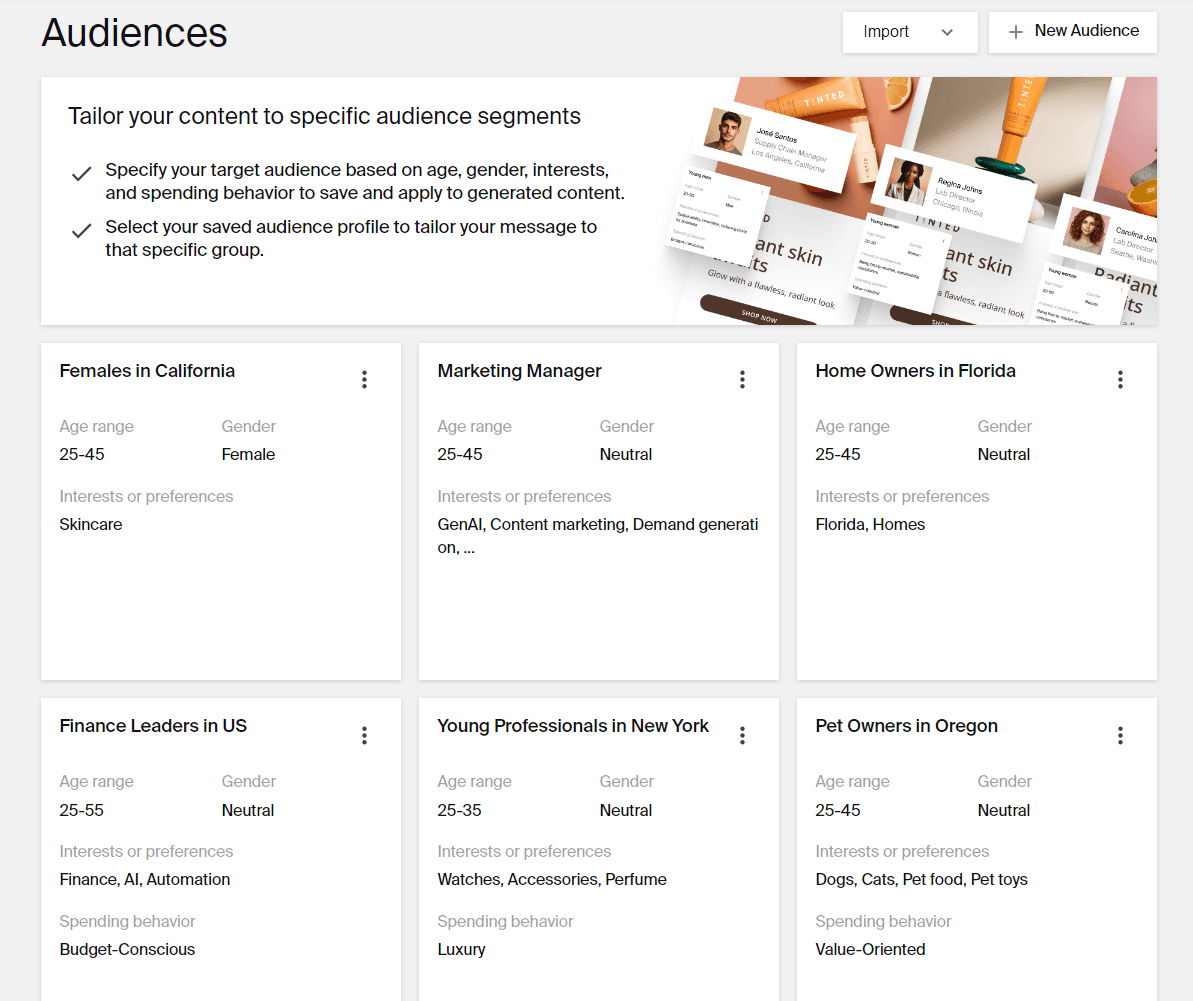
Typeface’s deep understanding of audience segmentation means each creative variation is purposefully crafted to connect with specific audience cohorts, maintaining brand consistency while adapting messaging and visual elements to match segment-specific preferences.
4. Using AI to auto-adapt or localize creatives from one ad to many
Creative testing and cross-platform optimization often create significant production bottlenecks for enterprise marketing teams. Each variation – whether it's a different aspect ratio, localized version, or A/B test variant – traditionally requires manual design work and introduces potential consistency issues.
Creative Automation on Typeface eliminates these bottlenecks by allowing teams to create multiple variations from a single parent template. Start with one primary ad design, then automatically generate all required format variations for each aspect ratio required for each platform, such as multiple banner images each properly sized while maintaining visual integrity. The same template system lets you efficiently create localized versions for different markets, swapping out translated copy and images while preserving the core design. For A/B testing, quickly generate multiple creative variations by switching out images, copy, or calls-to-action, all while ensuring it stays true to your design templates.
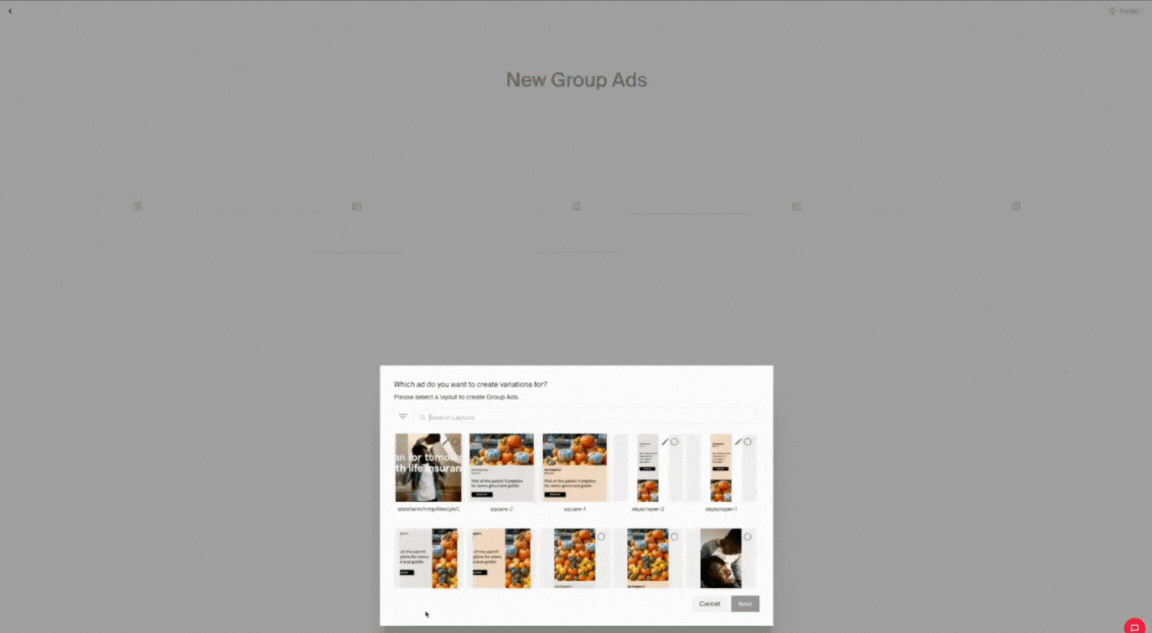
Real-world examples of AI-created ad content
The application of AI in creating ad content has already shown remarkable success across various industries. Here are some examples -
A Fortune 500 automotive company used Typeface accelerate creative production for their Year-End sales campaign creation by 52%, generating personalized ad variations across channels. Additionally, they adapted one of these ads for broadcast in just a few hours, saving the time and expense of a new photoshoot.
A Fortune 500 beverage company used Typeface to quickly create images for point-of-sale displays in Latin American markets by pairing its drinks with local foods. This localization strategy enabled them to deliver culturally relevant creative at scale, deepening market resonance.
A Fortune 500 energy management company maximized their content investment by transforming existing blog posts into high-performing LinkedIn sponsored content. By reallocating budget from content production to ad spend, they amplified the reach of their ads while reducing overall content production costs.
Features to look for in AI tools
When selecting AI tools for enhancing your social media ad campaigns, there are several key features to consider:
Automation and scalability: Look for tools that streamline tedious tasks and can scale up ad campaigns seamlessly. Typeface's AI ad generator enables faster ad creation by automating the generation of targeted ad content. This efficiency helps maximize performance and reduce the time and cost involved in developing social media ad campaigns. This, in turn, gives marketing teams more time to focus on strategy rather than execution. Typeface Creative Automation is perfect for turning single ad creatives into numerous variations. This feature enhances ad relevance through micro-targeting, ensuring the ads connect well with specific customer groups.
Audience data integrations: The platform should integrate with your Customer Data Platform (CDP) and support saved audience segments. This integration enables teams to create tailored creative variations based on defined audience characteristics, ensuring ad content resonates with specific customer segments.
Multimodal brand control: Modern brand management goes beyond basic style guides. Your AI platform should understand and apply comprehensive brand guidelines across all modalities – from tone of voice and brand values to channel-specific communication styles, visual aesthetics, and design systems.
Multi-channel campaign management: Enterprise-grade platforms should streamline campaign deployment across multiple channels. Key features include seamless publishing integrations with major ad platforms like Google Ads Manager and Meta, along with preview capabilities that ensure content meets platform-specific requirements.
Continuous optimization: The system should support systematic creative testing and optimization. Look for tools that facilitate efficient A/B testing across headlines, descriptions, CTAs, and visuals, providing actionable insights to continuously improve campaign performance.
Optimize ad performance with the power of AI
AI-powered ad generation represents a fundamental shift in enterprise social advertising, enabling teams to scale creative production while enhancing personalization and performance across channels. By automating creative workflows through intelligent templates and brand-aware systems, marketing teams can reallocate resources from tactical execution to strategic optimization, ultimately driving stronger ROAS. Get a demo to explore how AI can transform your campaign performance.

Share
Related articles

AI at Work
How to Use AI Ad Generators to Create Personalized Ad Campaigns 5x Faster

Neelam Goswami · Content Marketing Associate
November 13th, 2024 · 13 min read

Product
Why Marketers are Choosing Typeface as Their Go-to AI tool for Optimizing Content Creation and Ad Performance with Google

Courtney Brigham · Senior Director, Communications
April 8th, 2024 · 8 min read
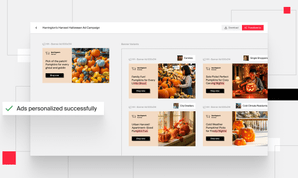
Product
How Creative Teams are Scaling Global Ad Campaigns with 1000+ Assets in Minutes vs. Months

Michal Bloch Ron · Director of Product
November 19th, 2024 · 5 min read